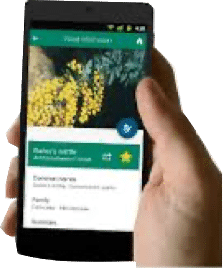European chafer beetle
About This Species
European chafer beetle was first introduced to BC in 2001, likely through infested turf from its native range of Europe. European chafer beetles feed on the roots of turf grass and may cause serious damage to green spaces like parks and golf courses. They are a nuisance pest to homeowners, as they infest lawns and attract predators such as crows, skunks, and raccoons that damage lawns as they dig for larvae. European chafer beetle is designated as a Management species by the BC Provincial Priority Invasive Species List.
How to Identify
The adult beetles are 1-1.5 cm long with light brown wing coverings. The underside of their thorax is covered in white fluffy hair. They only emerge for 1-2 weeks in June to mate and lay eggs. You may find them flying around tall objects such as buildings or trees.
The larvae are between 0.5-2.5 cm long; they are C-shaped grubs that live underground. Their body is mostly white, the last two segments of their body are grey. They have a tan head capsule and three sets of short legs just behind the head.
Take Action
Prevention is the best approach.
-
If you need advice about invasive species on your property or you are concerned about reported invasives in your local area, contact your local government or regional invasive species organization.
prevention tips
One of the best ways to prevent chafer beetle damage is to ensure your lawn is well watered and fertilized. European chafer beetle infestations can be treated naturally using biocontrol methods. Many garden centers sell the nematode Heterorhabditis bacteriophora, which feed on chafer beetle larvae. In 2019, the bacteria Bacillus thuringiensis var. galleriae (Btg) was registered as a biological control agent for European chafer beetle by the Pest Management Regulatory Agency.
REPORT TO PROTECT BC’S BIODIVERSITY

Use the app
Observe and report to protect BC’s biodiversity

Report through this website
Use our form to tell us what you’re seeing and where.

















